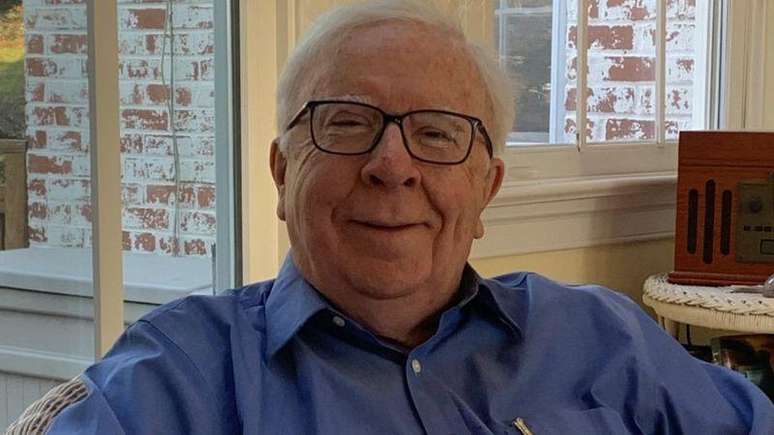At age 81, neurologist Richard Restak has a memory that would be the envy of even the youngest. How does he manage to maintain an impeccable memory? He said it in an interview with the BBC.
As the years go by, remembering things seems more and more difficult. Where did I leave the car keys? What is the name of that distant cousin’s daughter? What was the name of the actor in that movie that I loved so much?
But this process of memory erosion is not inevitable. Who guarantees it is Richard Restak, neurologist and professor at the Faculty of Medicine and Health of the George Washington University Hospital, in the United States. He is the author of about 20 books on the human mind.
The famous scientist is 81 years old, has gray hair and an impeccable memory. And he says that if we exercise our memory daily, in the same way we do with the body, it is possible to keep it active and in top shape.
In a conversation with BBC News Mundo (the BBC’s Spanish-language service), Restak offered vital advice for training and strengthening our memory.
1. Read fiction books
Non-fiction books are a great source of knowledge and information, but novels are much more useful for activating memory.
“Nonfiction books, like the last one I wrote, aren’t very memory-intensive. You can read the table of contents and focus on what matters, for example,” says Restak.
“But fiction is much more demanding from the point of view of memory, especially when it’s a complex novel,” explains the professor. “There, characters appear and disappear. You can meet someone in chapter two who will only appear in chapter 10.”
Maintaining the story thread, character connections, and plot details requires more memory effort than non-fiction books.

2. Turn words into images
This is a basic principle. Restak suggests, for example, that if you’re introduced to someone with the surname Greenstone — Pedraverde, in Portuguese — you should visualize a deep green stone in your head.
This simple strategy will help your mind remember that last name smoothly.
“If you don’t do it and keep your words, it could happen that later you don’t remember if it’s Pedrazul or Pedrapreta, for example,” she explains.
Another trick used by the expert is to create a mental map of places you know very well, such as your neighborhood, to relate them to things you want to remember.
If the goal, at some point, is to remember to buy milk and bread, Restak matches words to two dots on his map to compose dramatic images that are hard to forget.
“I imagine my house turned on its side, with milk pouring out of the chimney (as if it were a milk carton) and spilling onto the street,” he describes. “And when I pass the library and look out the window, I imagine the shelves are filled with slices of bread instead of books.”
3. Play mind games with your friends (and when you’re alone)
One of Restak’s favorite games for parties or family gatherings, which is a great memory exercise, is the so-called “20 Questions” game.
The game consists of one player (or team) thinking of a person, thing or place, while the other player (or team) has to guess what or who it is, asking up to 20 questions that can only be answered with “yes “. or not”.
The difficulty of the game lies in the fact that both sides have to remember both the questions and the answers, so as not to give false clues, not to repeat the questions and to arrive, by elimination, at the correct answer.
If you are alone and you are a sports lover, for example, try to remember all the players of your favorite team. Once they’re in your mind, start alphabetizing them and list the players in that order.
4. Use technology (smartly)

Carrying a list of products we want to buy at the supermarket on our mobile phone, or a photo of something we’ve never bought but want to try, isn’t necessarily a bad idea.
Using cell phones and similar devices weakens our memory, but we can use technology to our advantage.
When you go to the supermarket, for example, Restak recommends trying to remember what you went to buy first and only then consulting the list, to avoid forgetting anything.
The same happens with new products: try to remember how they are made and, once received, confirm it with a photo to see if it fits.
The idea, according to the professor, is “not to replace the memory with the device, but to use the brain first and then check its performance”.
5. Take a “siesta”
In some countries, siesta is not well known, but several studies have shown that taking a nap is essential to help memory. Restak takes a nap every day and says it helps absorb information, consolidate it, and encode memory, so you can access it later.
“In fact, when we took two groups of students and allowed one of them to nap after learning something and the other not, we observed that the group that got some sleep learned much better,” says Restak.
The teacher’s recommendation is to sleep 20 to 40 minutes. “If you go too late, it will interfere with your night’s sleep. So set an alarm or have someone wake you up.”
6. Improve your diet
More than specific foods, Restak says the main thing is to avoid certain foods, such as ultra-processed foods, those that contain excess fat, salts, preservatives, etc.
“These foods are not good for memory because, in the long run, they reduce blood circulation in memory-related regions and cause high blood pressure and diabetes,” he explains. “These are factors that can cause dementia.”
Source: Terra
Ben Stock is a lifestyle journalist and author at Gossipify. He writes about topics such as health, wellness, travel, food and home decor. He provides practical advice and inspiration to improve well-being, keeps readers up to date with latest lifestyle news and trends, known for his engaging writing style, in-depth analysis and unique perspectives.








